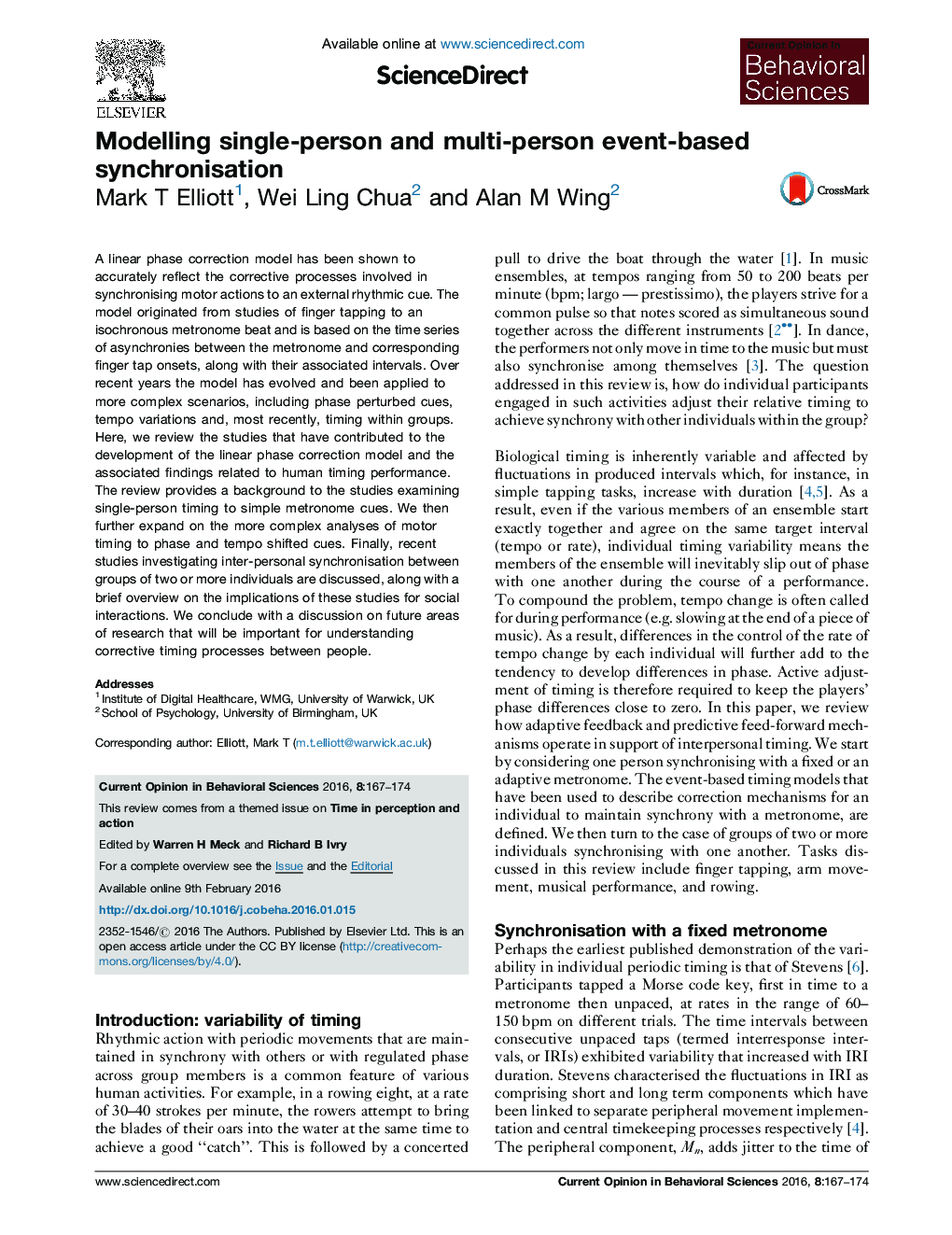| Article ID | Journal | Published Year | Pages | File Type |
|---|---|---|---|---|
| 6260520 | Current Opinion in Behavioral Sciences | 2016 | 8 Pages |
â¢The linear phase correction model accurately represents human rhythmic timing behaviour.â¢The model was originally developed to describe timing behaviour of a single individual synchronising to a metronome beat.â¢More recently the model has been expanded to cover interpersonal coordination between groups of individuals.
A linear phase correction model has been shown to accurately reflect the corrective processes involved in synchronising motor actions to an external rhythmic cue. The model originated from studies of finger tapping to an isochronous metronome beat and is based on the time series of asynchronies between the metronome and corresponding finger tap onsets, along with their associated intervals. Over recent years the model has evolved and been applied to more complex scenarios, including phase perturbed cues, tempo variations and, most recently, timing within groups. Here, we review the studies that have contributed to the development of the linear phase correction model and the associated findings related to human timing performance. The review provides a background to the studies examining single-person timing to simple metronome cues. We then further expand on the more complex analyses of motor timing to phase and tempo shifted cues. Finally, recent studies investigating inter-personal synchronisation between groups of two or more individuals are discussed, along with a brief overview on the implications of these studies for social interactions. We conclude with a discussion on future areas of research that will be important for understanding corrective timing processes between people.
